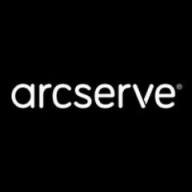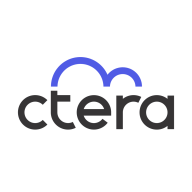

Arcserve UDP and CTERA Enterprise File Services Platform compete in the data protection and management space. Arcserve UDP stands out in pricing and customer support, while CTERA offers superior features, providing a comprehensive solution.
Features: Arcserve UDP provides comprehensive data backup and recovery, a range of cloud support options, and backup efficiency. CTERA leads with secure file sharing, collaboration, enterprise-grade data protection, data mobility, and edge-to-cloud compliance.
Ease of Deployment and Customer Service: Arcserve UDP offers streamlined deployment, extensive integration support, and reliable customer service. CTERA's deployment involves comprehensive edge-to-cloud configurations, providing extensive data control, which may be challenging, but offers a broader solution.
Pricing and ROI: Arcserve UDP is cost-effective with strong ROI, straightforward pricing, and efficient resource use. CTERA's higher setup cost is justified by its extensive feature set, targeting large enterprises for long-term benefits.
| Product | Market Share (%) |
|---|---|
| CTERA Enterprise File Services Platform | 1.0% |
| Arcserve UDP | 2.2% |
| Other | 96.8% |


| Company Size | Count |
|---|---|
| Small Business | 23 |
| Midsize Enterprise | 10 |
| Large Enterprise | 9 |
| Company Size | Count |
|---|---|
| Small Business | 2 |
| Midsize Enterprise | 2 |
| Large Enterprise | 6 |
The CTERA Enterprise File Services Platform provides a cloud-native global file system over public and private object storage, revolutionizing the world of hybrid cloud data solutions. Enhanced by a rich data services ecosystem, CTERA enables enterprises to gain full control of their data for optimal edge performance, data insight, and governance. The platform focuses on security, providing features like data encryption, access controls, and ransomware protection. Centralized management tools enable efficient data control and monitoring. The platform is being used to replace legacy NAS and file servers, especially at remote locations, and simplify backup and disaster recovery of file data while providing the flexibility of multi-cloud deployments with infinite scalability. CTERA is at the core of hybrid cloud transformations of some of the world’s largest banks, healthcare organizations, global media groups, and government agencies, in deployments that scale to tens of petabytes.
We monitor all Disaster Recovery (DR) Software reviews to prevent fraudulent reviews and keep review quality high. We do not post reviews by company employees or direct competitors. We validate each review for authenticity via cross-reference with LinkedIn, and personal follow-up with the reviewer when necessary.